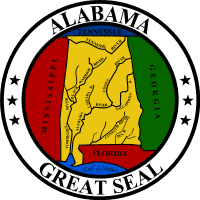Alabama Hunters Asked to Report Dove Bands
Alabama DCNR 08.22.13

The mourning dove is one of the most widely distributed and abundant birds in North America. It is the most popular game bird hunted in 38 of the lower 48 states. More mourning doves are harvested than all other migratory game bird species combined. In Alabama, more than 61,000 hunters spend more than 238,000 man-days hunting doves and hunters harvest more than 1.4 million mourning doves each year during Alabama’s mourning dove season.
To help make appropriate management decisions, wildlife managers need current and accurate data on the species being managed and harvested. Banding mourning doves provides information on survival rates, harvest rates, reporting rates and their movements. It is an important element to understanding mourning dove population dynamics and the effects of annual hunting regulations on mourning dove populations.
Alabama is one of 27 states participating in a national dove banding study. Fifteen of the participating states are located in the Eastern Management Unit, nine are located in the Central Management Unit, and three are located in the Western Management Unit. Wildlife biologists and support staff have banded 9,549 mourning doves in Alabama since 2003. To date, 646 of the banded doves have been reported by hunters.
More than 98 percent of the mourning doves banded in Alabama during the months of July and August each year are resident doves that do not migrate. Many doves in Alabama only travel a few miles each day from their nest site to their feeding and loafing areas. However, hunters have reported banded mourning doves harvested in Alabama from 14 states, including Iowa, Texas and Ohio.
Most mourning doves in the population are less than 2 years old. The oldest mourning dove banded in Alabama was 7 years old. The oldest mourning dove on record was banded in Georgia and lived 31 years. Hunting removes only approximately 10 percent of the mourning dove population each year. Predation, harsh weather, accidents, and occasional disease outbreaks account for most of the mortality in mourning doves.
The hunter is a critical link in this important national mourning dove banding study. Approximately 50 percent of the banded mourning doves harvested are reported. Hunters can help by checking the legs of mourning doves encountered for a silver band, or “bracelet.” It is hoped that with the help of hunters, banded mourning doves will reach the “trophy” status of banded waterfowl, which have a reporting rate of approximately 80 percent. Reporting information is in small print on each band. If a banded mourning dove is harvested, please call 1-800-327-BAND (2263) to report it. Most banded birds are reported online at www.pwrc.usgs.gov. Once at the site, select “Bird Banding Laboratory.” Hunters are not required to send in the band and may keep it as a souvenir.
A national mourning dove banding program provides important data necessary for a long term informed harvest management strategy. The strategy is envisioned in the U.S. Fish and Wildlife Service “National Mourning Dove Strategic Harvest Management Plan.” The plan requires development of demographic population models which depend on estimates derived from mourning dove banding data. By reporting banded doves, hunters are participating in a very important national research project to ensure the continued conservation of this magnificent game bird.
The Alabama Department of Conservation and Natural Resources promotes wise stewardship, management and enjoyment of Alabama’s natural resources through five divisions: Marine Police, Marine Resources, State Lands, State Parks, and Wildlife and Freshwater Fisheries. To learn more about ADCNR visit www.outdooralabama.com.

